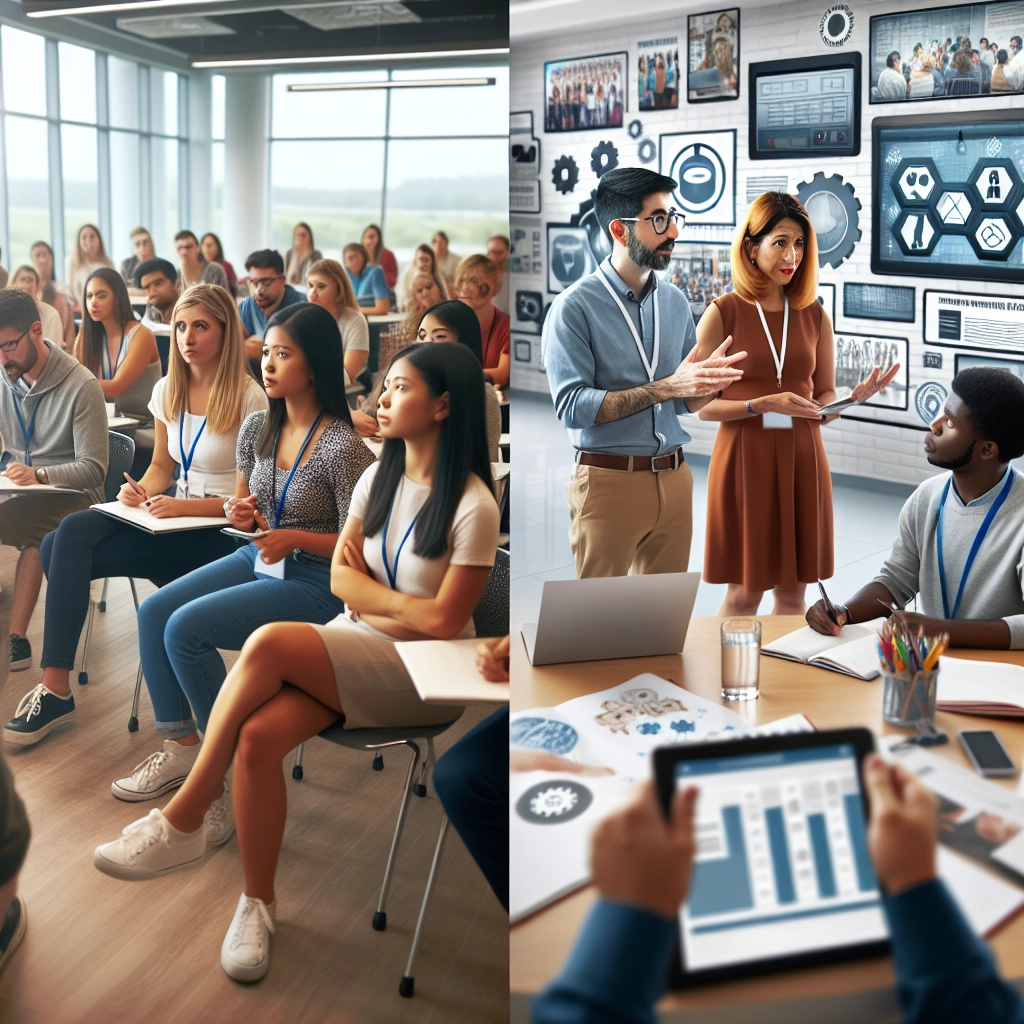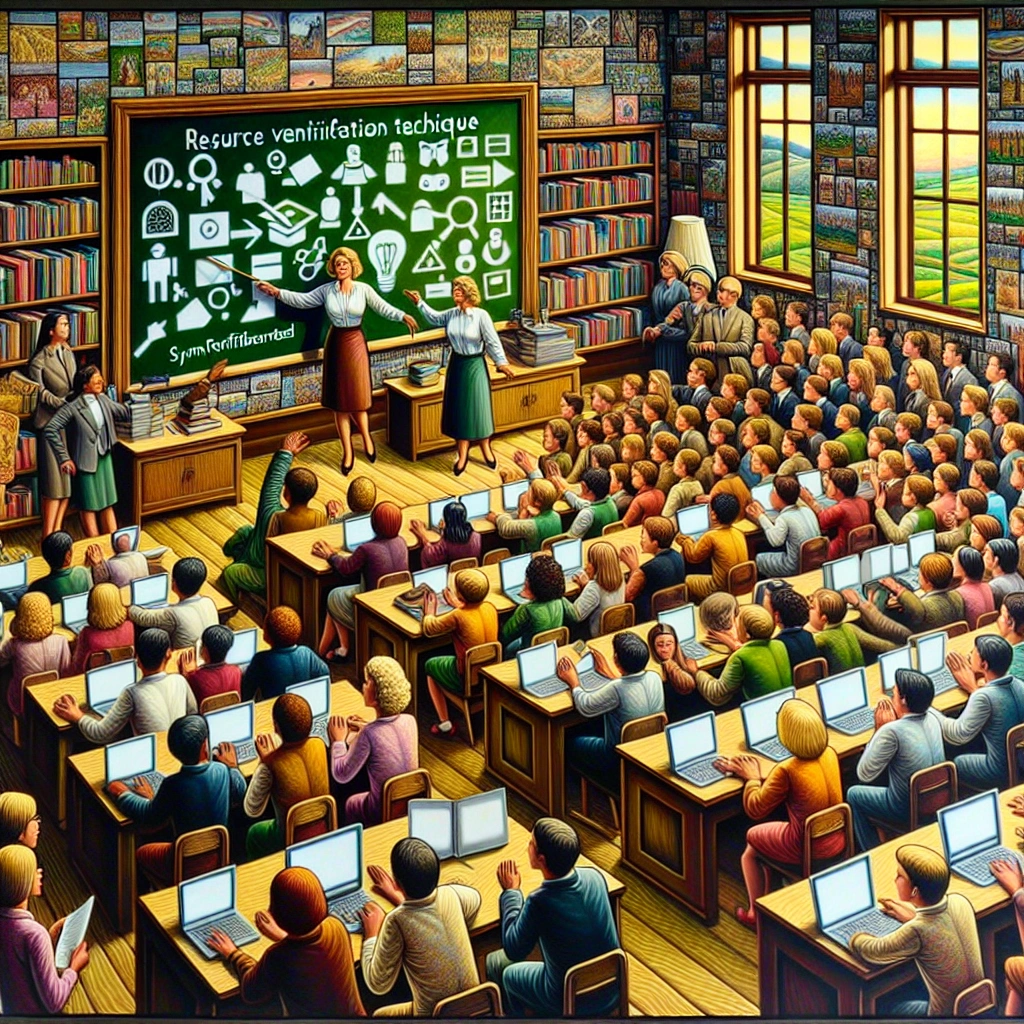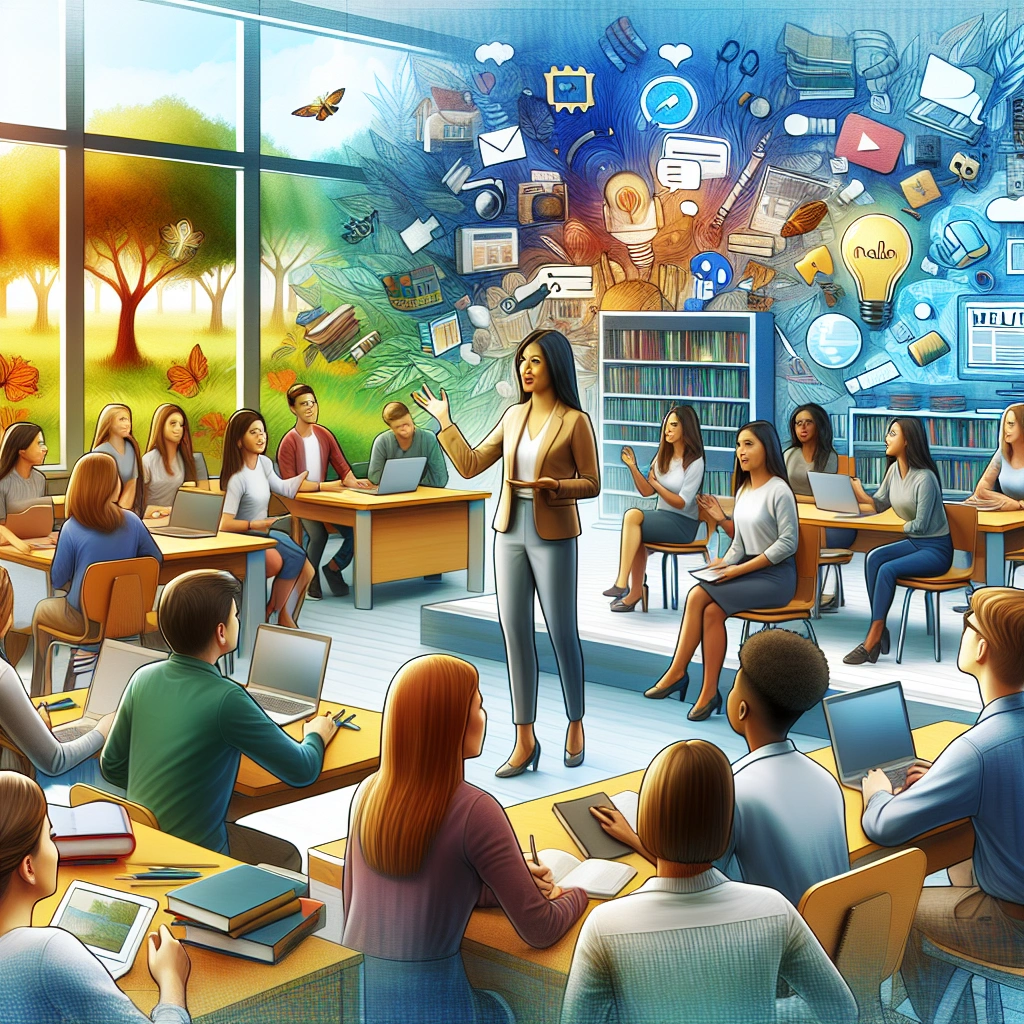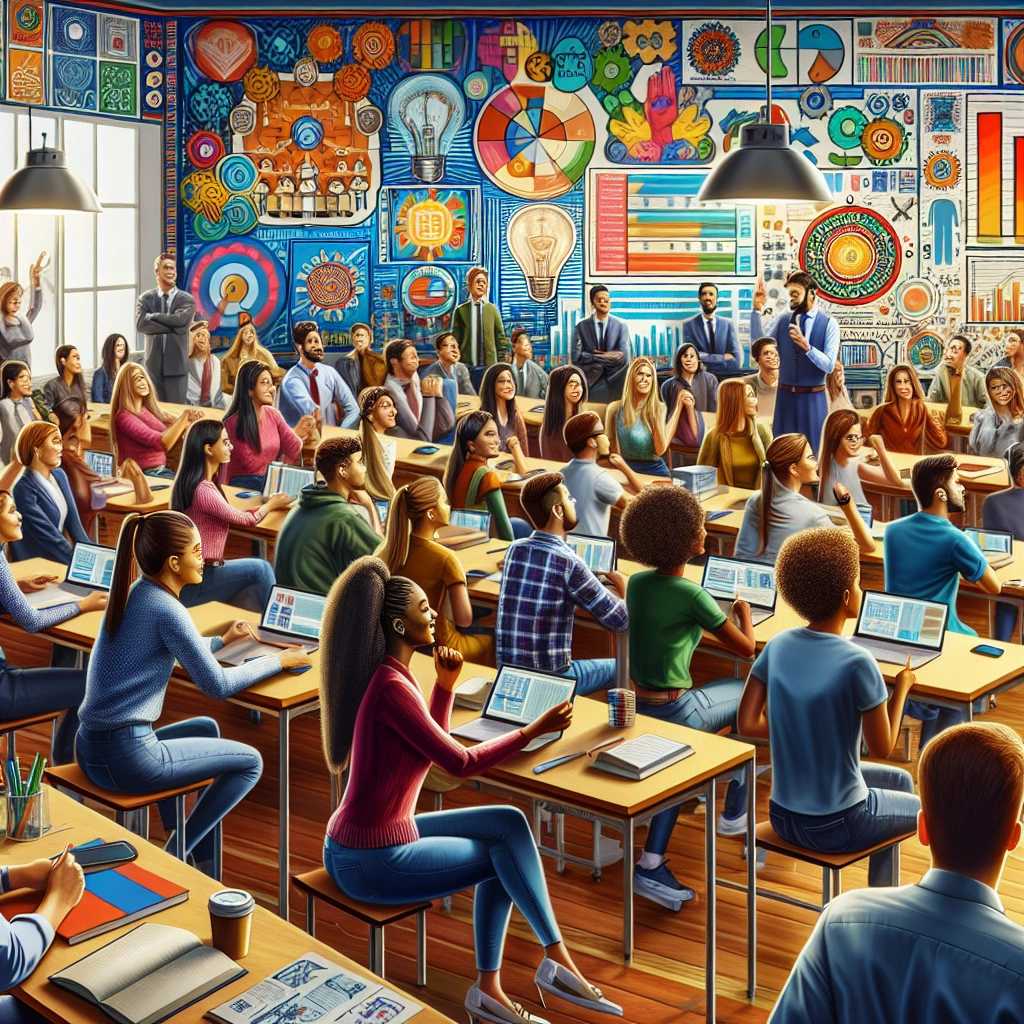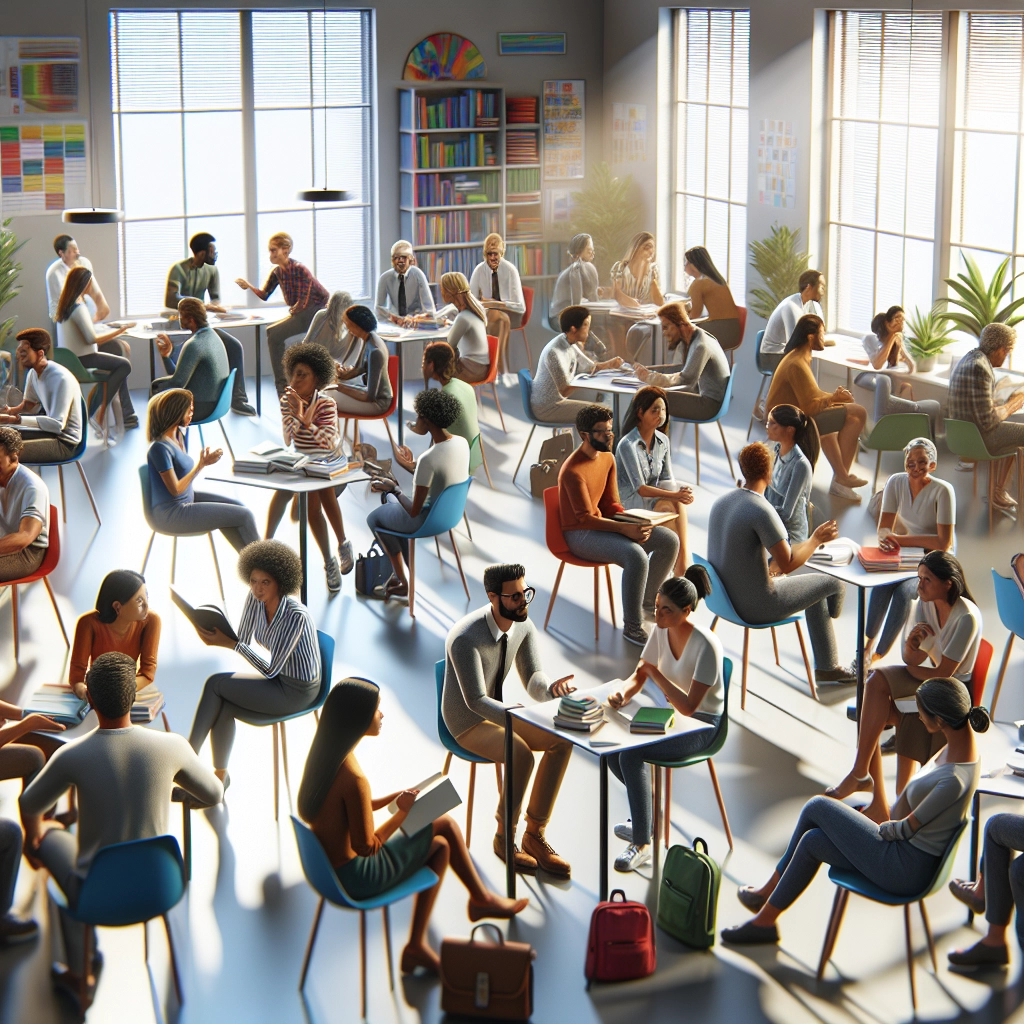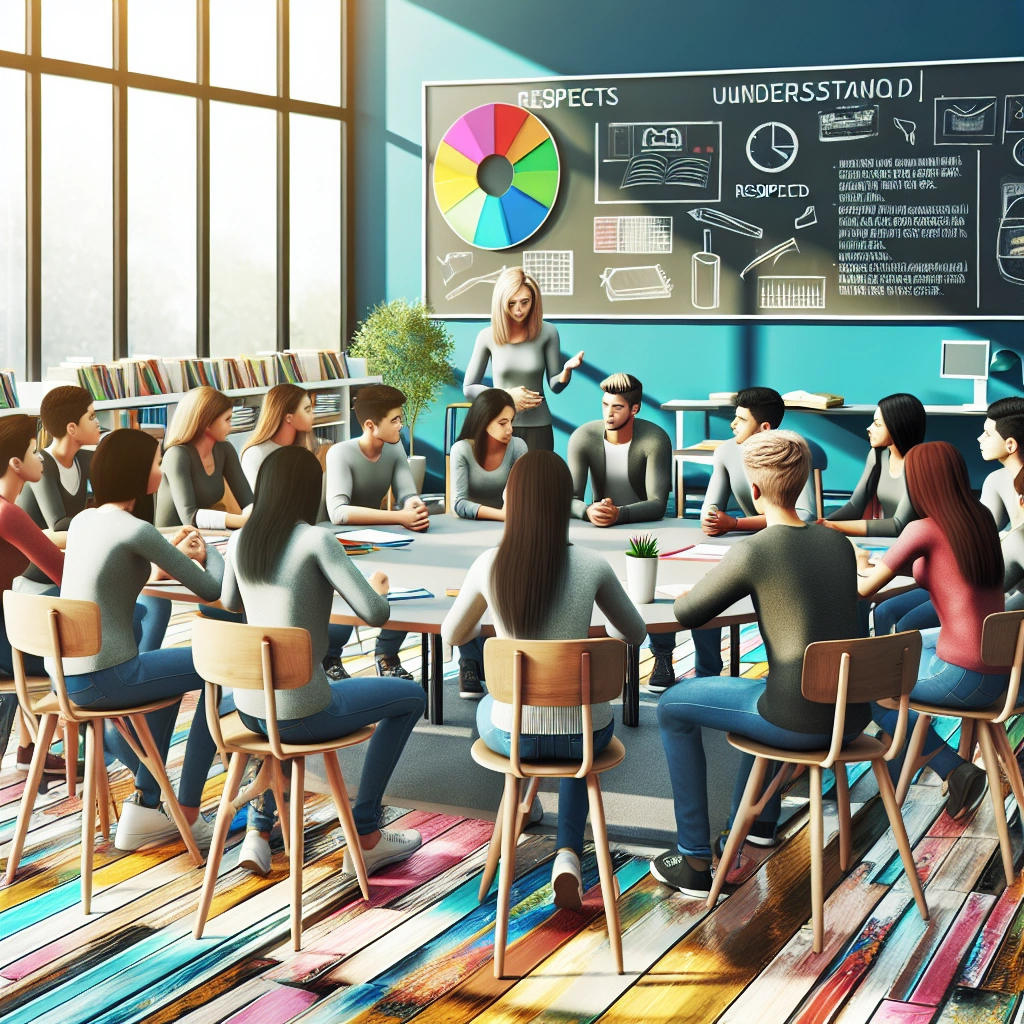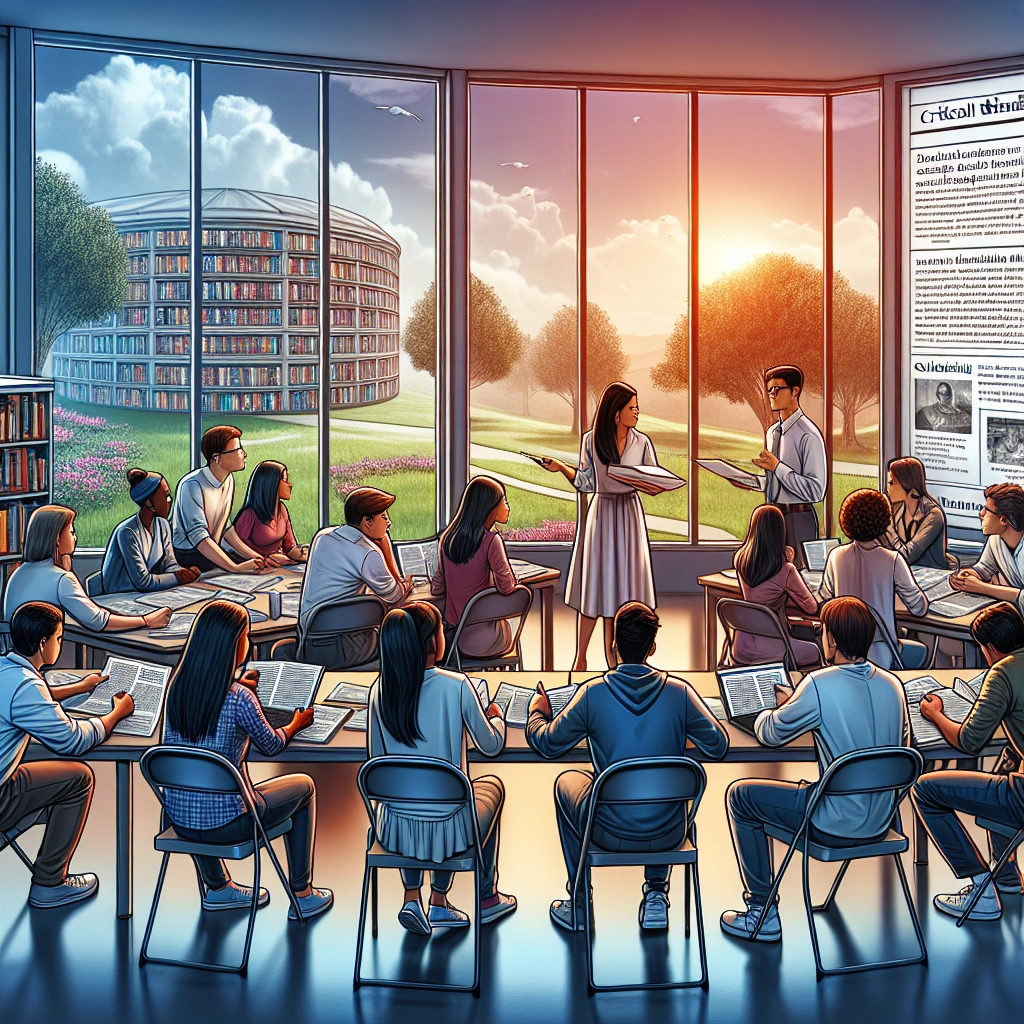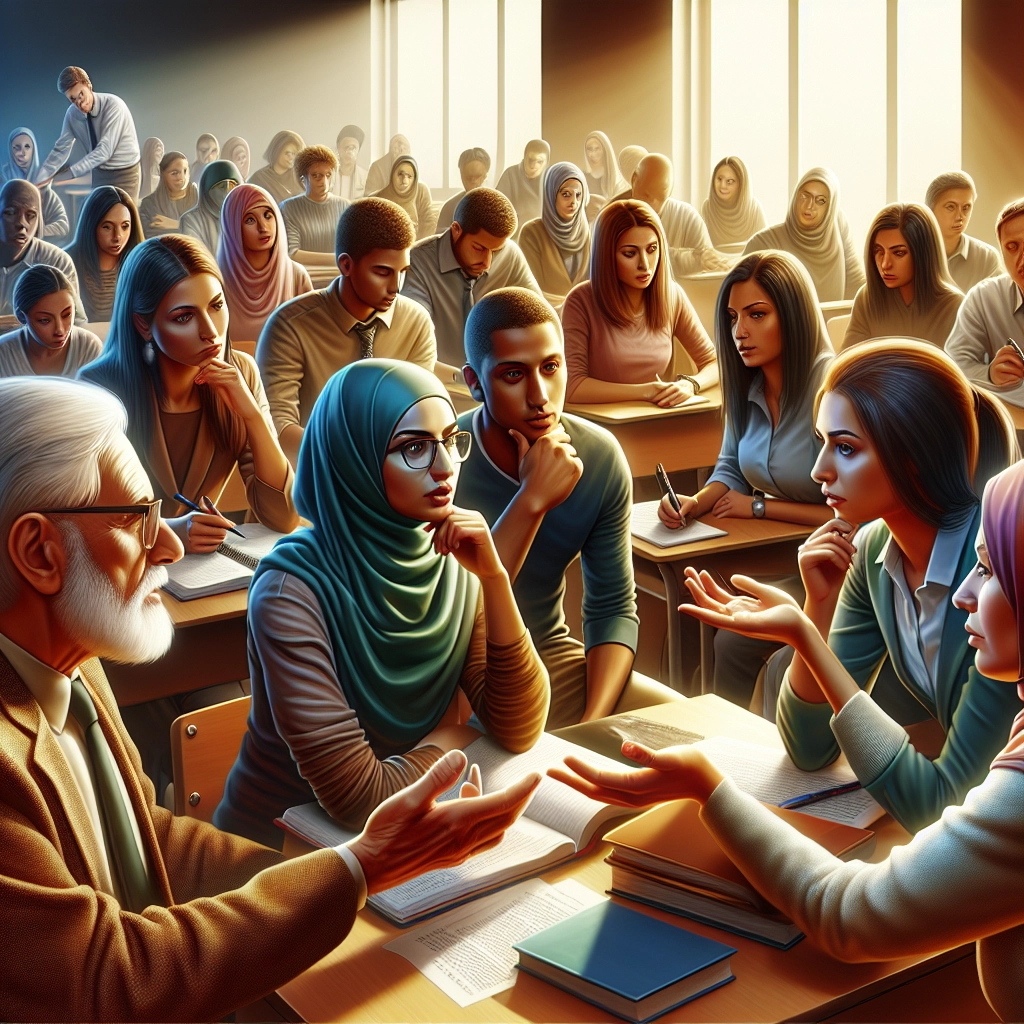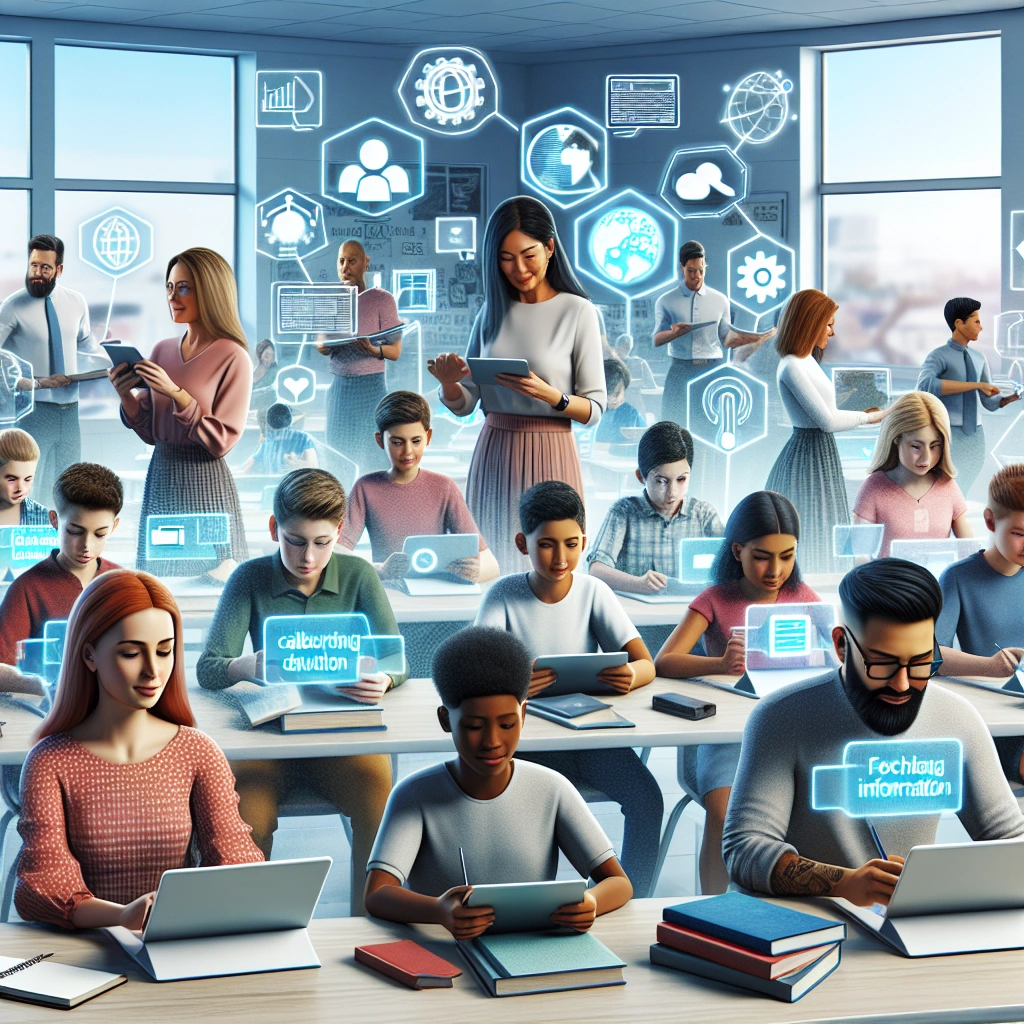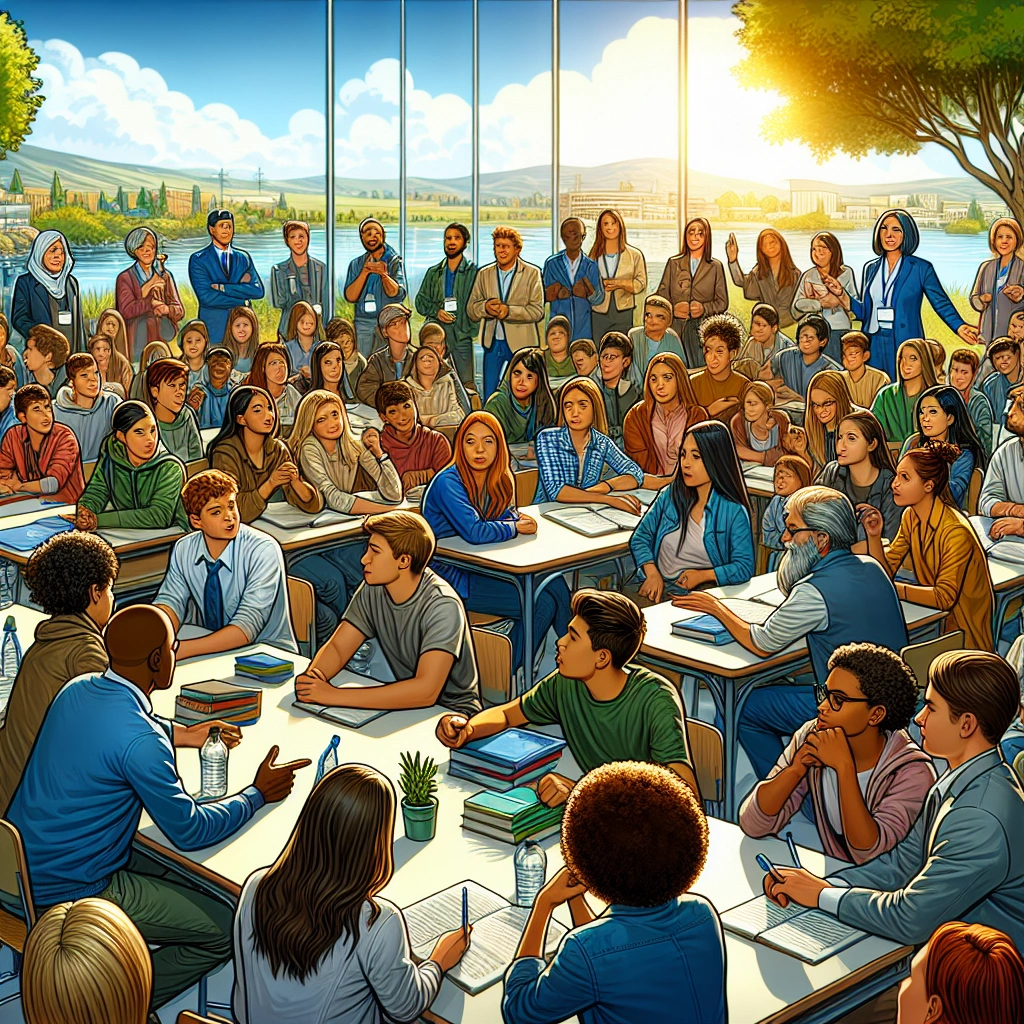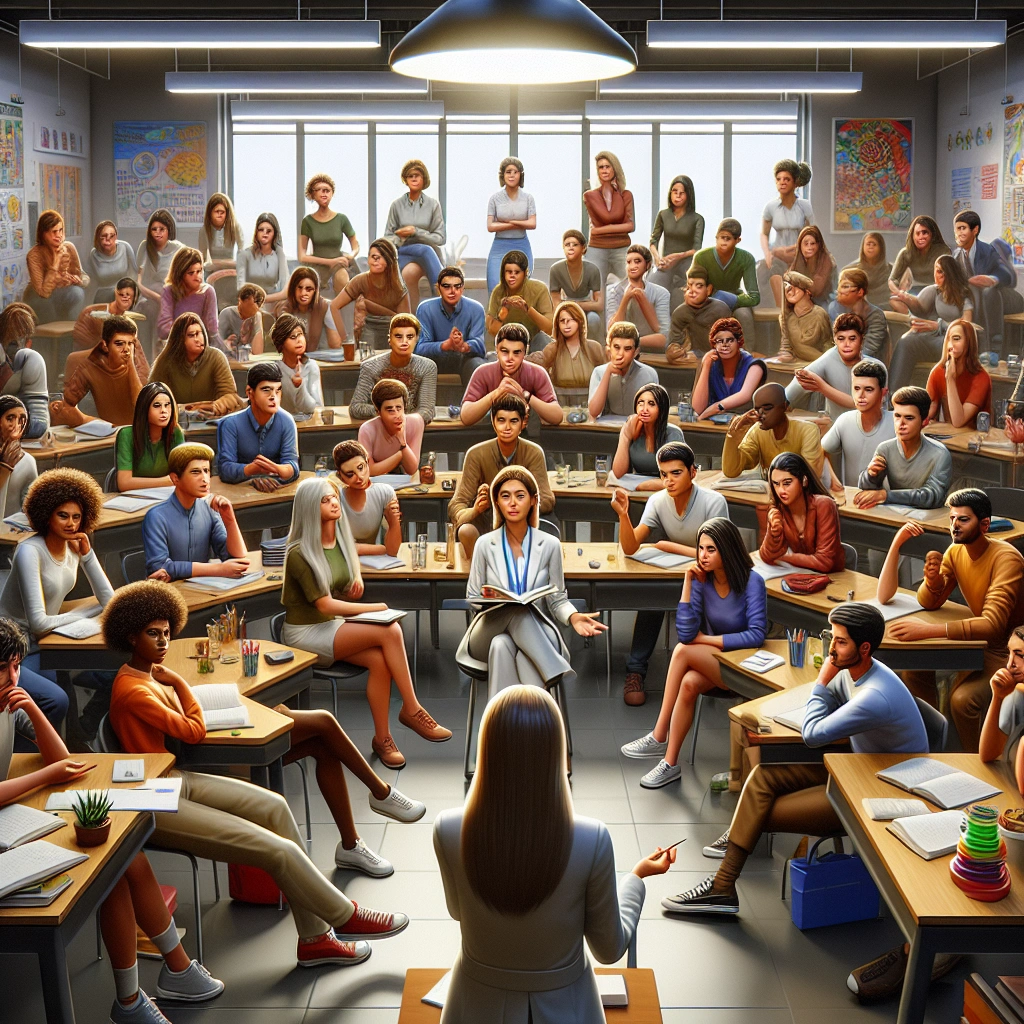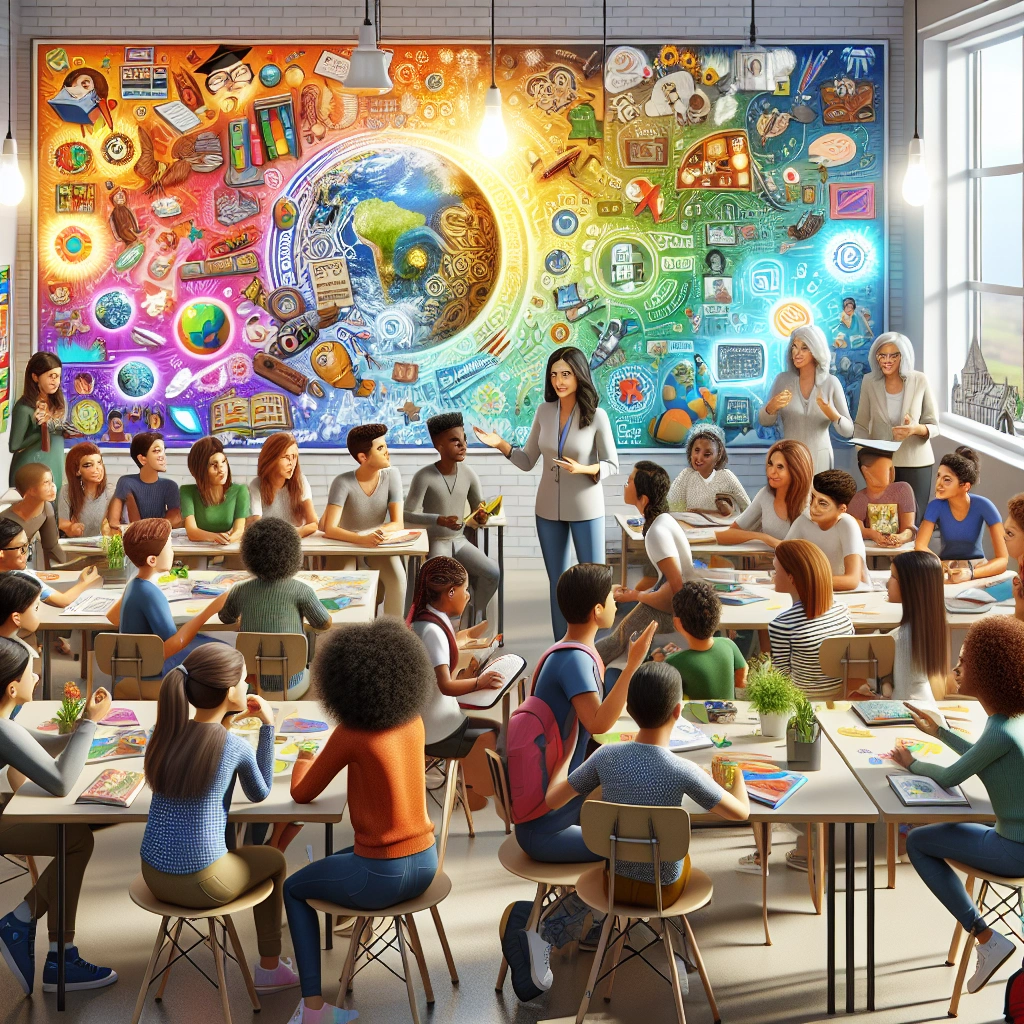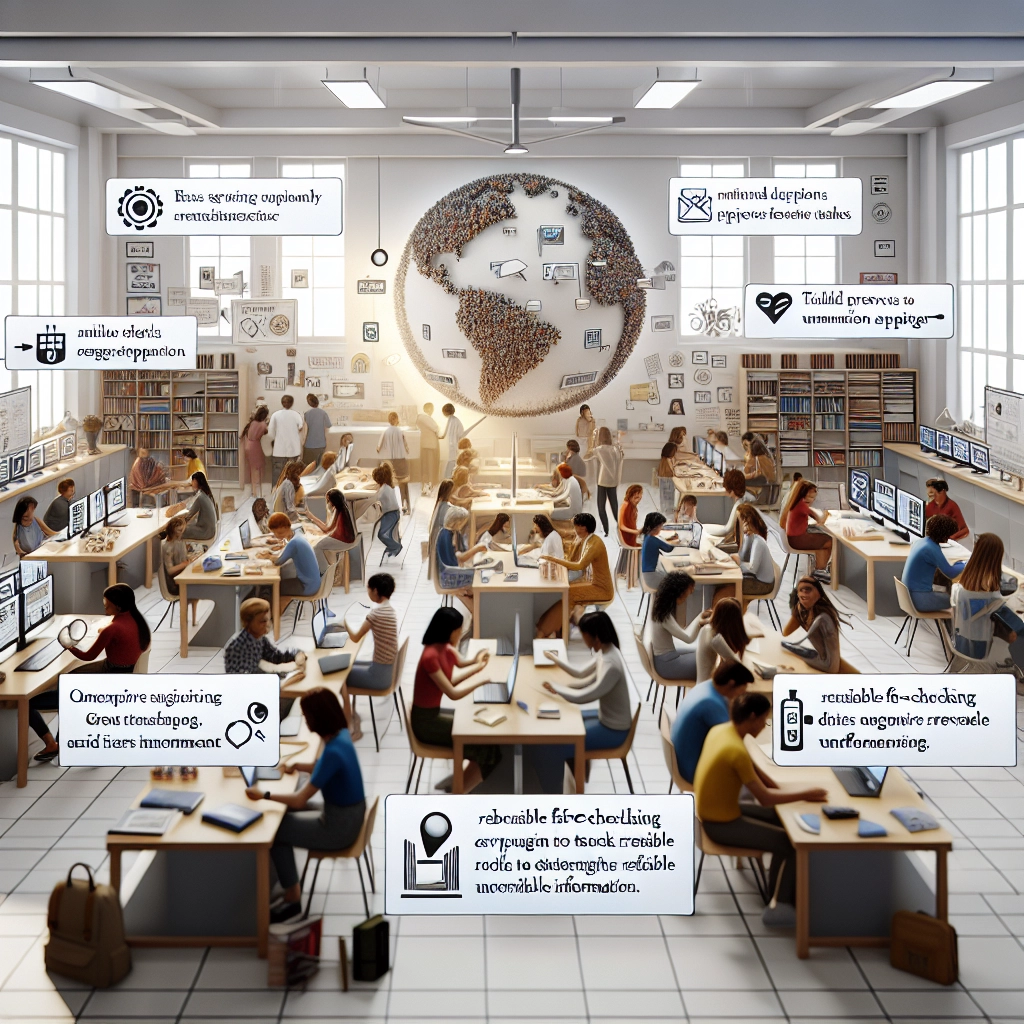What Are The Common Strategies To Combat Misinformation Fatigue In Education: Effective Solutions


Misinformation fatigue in education refers to the overwhelming feeling that occurs when individuals are exposed to a large volume of misinformation, leading to confusion, frustration, and disengagement. It is crucial to combat misinformation fatigue in education to ensure that students are receiving accurate and reliable information to support their learning and development.
Misinformation fatigue can have detrimental effects on students’ academic performance, critical thinking skills, and overall well-being. Educators play a vital role in combating misinformation fatigue by implementing strategies such as media literacy education, fact-checking exercises, and promoting critical thinking skills.
Additionally, creating a supportive environment where students feel comfortable questioning and verifying information can help mitigate the impact of misinformation fatigue in education.
Educating Students
Incorporating critical thinking skills into the curriculum
Incorporating critical thinking skills into the curriculum involves integrating activities that challenge students to analyze, evaluate, and synthesize information. For example, educators can introduce Socratic seminars where students engage in respectful discussions to develop their critical thinking abilities.
Incorporating real-world scenarios into lessons also prompts students to think critically about various problems and solutions. By encouraging students to question assumptions and explore diverse perspectives, educators foster an environment that nurtures critical thinking.
Teaching students how to identify reliable sources of information
Teaching students how to identify reliable sources of information is essential in combating misinformation fatigue. Educators can conduct interactive sessions guiding students on the CRAAP test (Currency, Relevance, Authority, Accuracy, and Purpose) to evaluate sources.
Additionally, creating engaging activities, such as source showdowns where students compare and contrast sources, enables them to develop the skills to discern reliable information from misinformation. Furthermore, providing examples of credible and non-credible sources and discussing criteria for determining their reliability equips students with practical knowledge to navigate the vast sea of information on the internet.
| Strategies for Educating Students | |
|---|---|
| Incorporating critical thinking skills into the curriculum | – Introduce Socratic seminars – Incorporate real-world scenarios |
| Teaching students how to identify reliable sources of information | – Guide on CRAAP test – Conduct source showdowns – Provide examples of credible and non-credible sources |
By implementing these strategies, educators can ensure that students are equipped with the necessary critical thinking skills and knowledge to discern factual information from misinformation, thereby combating misinformation fatigue in education.
Training Educators
As educators, it is crucial to receive professional development that focuses on identifying and addressing misinformation. This training should include workshops and resources that help educators recognize misinformation patterns and equip them with effective strategies to counter misinformation in educational settings.
Additionally, educators need to be trained on how to guide students in evaluating information. This involves teaching students critical thinking skills, source evaluation techniques, and fact-checking methods to help them discern accurate information from misinformation.
Educators should be provided with tools and methodologies to empower students to become informed and discerning consumers of information.
| Misinformation Training for Educators |
|---|
| 1. Professional Development Workshops |
| 2. Resource Materials |
| 3. Strategies to Counter Misinformation |
Fact-Checking Resources
Accessing reliable fact-checking websites and tools
To combat misinformation fatigue in education, educators and students can access reliable fact-checking websites and tools such as PolitiFact, FactCheck.org, and Washington Post Fact Checker. These platforms provide accurate information and help users verify the authenticity of news and information.
| Fact-Checking Resources | Features |
|---|---|
| PolitiFact | Fact-checking journalism at its core |
| FactCheck.org | Nonpartisan, nonprofit organization |
| Washington Post Fact Checker | Provides accurate information |
Teaching students how to fact-check information before believing or sharing it
In addition, educators can teach students how to fact-check information before believing or sharing it. Incorporating digital verification skills into classroom activities, using resources like Civic Online Reasoning (COR) curriculum, and inviting fact-checkers to high schools and educational institutions are effective strategies.
This equips students with the necessary tools to discern credible information and combat misinformation fatigue effectively.
These strategies play a crucial role in building a culture of critical thinking and equipping students with the skills to navigate the overwhelming influx of information, ultimately combating misinformation fatigue in education effectively.
It’s important to empower students to differentiate between reliable sources and misinformation, fostering a generation of well-informed individuals who can critically evaluate the information they encounter.
Let’s make fact-checking not just a task, but a skill that students can possess and utilise to filter through the overwhelming amount of information bombarding them.
Remember, the power to discern truth lies within each individual, and education is the key to ensuring a future generation well-equipped to combat misinformation fatigue.
Encouraging Media Literacy
Promoting media literacy skills among students
By integrating media literacy into the curriculum, students can learn to critically evaluate information from various sources, including social media and news outlets. For example, teachers can create assignments where students analyze news articles and identify potential biases or misinformation.
Additionally, interactive discussions on current events can help students understand the impact of media on public opinion and societal perspectives.
Discussing the impact of misinformation on society
Misinformation not only distorts facts but also influences public perceptions, leading to societal division and erosion of trust in institutions. For instance, false narratives propagated through social media can polarize communities and fuel conflicts.
It’s crucial to engage students in dialogues about the consequences of misinformation on society, fostering a culture of critical thinking and skepticism towards the information they encounter. This proactive approach can empower them to navigate the digital landscape responsibly and contribute to a more informed society.
| Misinformation Impact | Description |
|---|---|
| Polarization | Misinformation contributes to the division of societal opinions and beliefs. |
| Erosion of Trust | Inaccurate information diminishes public trust in media, institutions, and even fellow citizens. |
| Social Conflict | False narratives can exacerbate tensions, leading to strained relationships and societal discord. |
Promoting media literacy among students is essential for combating misinformation fatigue and nurturing a society capable of discerning truth from falsehood in the digital age. Through informed critical thinking and awareness, individuals can contribute to a more cohesive and well-informed society.
Remember, always fact-check before sharing!
Providing Context
Context is crucial in understanding information as it provides the framework to comprehend the underlying meaning. In education, context helps students grasp the significance of the information they are learning, enabling a deeper connection and assimilation of knowledge.
Highlighting the importance of context in understanding information
The significance of context in education is exemplified when teaching historical events. For instance, understanding the context of World War II, including the political climate and social dynamics, allows students to appreciate the impact of the war on a global scale and its relevance to current international relations.
Using real-world examples to demonstrate the impact of misinformation
An example of misinformation’s impact in education is the dissemination of false scientific claims, leading to confusion and misleading beliefs among students. An infamous instance was the false theory of vaccine-induced autism, causing unwarranted fear and hesitancy among parents to vaccinate their children.
Collaboration with Parents
Involving parents in conversations about combating misinformation
To involve parents in conversations about combating misinformation, it’s essential to create open and non-judgmental spaces where parents feel comfortable expressing their concerns. Hosting interactive workshops or seminars covering topics such as fact-checking methods and identifying reliable sources can help empower parents to navigate misinformation effectively.
Encouraging two-way communication channels, such as forums or social media groups, can also foster ongoing discussions and the sharing of credible information.
Providing resources for parents to support their children in navigating information
Equipping parents with easily accessible and practical resources is key to supporting their children in navigating information. Providing curated lists of trustworthy educational websites, fact-checking tools, and age-appropriate media literacy resources can empower parents to guide their children in discerning accurate information.
Additionally, offering workshops or webinars specifically tailored for parents on how to discuss misinformation and critical thinking with their children can enhance their ability to be proactive mentors in their child’s educational journey.
Creating a Positive Online Environment
Dear readers, it’s crucial to encourage respectful online discussions to combat misinformation fatigue in education. This can be achieved by setting clear guidelines and fostering an environment where diverse perspectives are valued.
Additionally, actively moderating discussions to ensure respectful behavior and constructive dialogue is essential for maintaining a positive online environment.
In addition, building a community that shares accurate and reliable information is paramount in the fight against misinformation fatigue. This can be accomplished by promoting critical thinking and fact-checking among community members.
Encouraging the sharing of credible sources and providing resources for verifying information can further strengthen the reliability of the community’s contributions.
Furthermore, incorporating educational initiatives and collaborative projects that emphasize the importance of accurate information can greatly contribute to the creation of a positive online environment. By instilling a culture of accountability and transparency, the community can actively work towards combatting misinformation fatigue in the education sector.
The key to combating misinformation fatigue in education lies in fostering an environment of respect and promoting the sharing of accurate and reliable information within the online community. Let’s work together to create an online space where learning thrives and misinformation finds no footing.
Addressing Confirmation Bias
Teaching students how to recognize and overcome confirmation bias
Teaching students to recognize and overcome confirmation bias involves creating awareness about the tendency to seek out information that aligns with existing beliefs. This can be achieved through interactive exercises, discussions, and critical thinking activities that challenge students to evaluate the sources and validity of information.
Providing strategies to challenge preconceived notions and beliefs
Strategies to challenge preconceived notions and beliefs in education include promoting diverse perspectives and encouraging students to question assumptions. Employing case studies, role-playing scenarios, and engaging with conflicting viewpoints can help students develop the skills to critically analyze information and broaden their perspectives.
Identifying Biases in Information Sources
Biases in information sources can manifest in various forms, including sample selection bias and information bias. Sample selection bias occurs when certain groups are overrepresented or underrepresented in research samples, leading to skewed conclusions.
On the other hand, information bias arises from errors in measuring or classifying key study variables, which can significantly impact the validity of research findings.
Teaching students to critically analyze bias in different media platforms involves empowering them to recognize biases by placement, as well as understanding how media outlets prioritize and present stories. Additionally, educating students on the impact of social media algorithms in creating echo chambers and hindering cross-cutting exposure is crucial in fostering critical thinking skills to combat misinformation fatigue in education.
Promoting Open Dialogue
Creating a safe space for discussions about misinformation allows students to express their concerns and questions freely, fostering an environment of trust and openness. Encouraging open discussions about misinformation helps students feel empowered, enabling them to seek clarification and understand the complexities of the information landscape.
Encouraging students to ask questions and seek clarification further supports their critical thinking skills and ability to discern accurate information from misinformation. By fostering an environment where questions are welcomed and validated, students become more confident in challenging information and seeking clarification, ultimately combating misinformation fatigue in education.
| Benefits of Open Dialogue in Education |
|---|
| 1. Fosters critical thinking |
| 2. Encourages active participation |
| 3. Builds trust and confidence |
Leveraging Technology
To combat misinformation in education, leveraging technology plays a crucial role. By utilizing educational technology, educators can empower students with the skills and knowledge to critically evaluate information sources.
By incorporating digital literacy skills into the curriculum, students can learn to discern credible information from misinformation, equipping them with the tools to combat the spread of false information.
This can be achieved through interactive online modules and educational games that simulate real-life scenarios involving fake news. Platforms like “Go Viral!” and “Bad News” provide invaluable experiences that demonstrate the tactics and techniques used to spread misinformation.
Additionally, “Factitious 2020: Pandemic Edition” challenges players to identify and debunk false narratives related to the pandemic, thus enhancing their digital literacy skills.
Furthermore, digital literacy practices in an inclusive classroom setting can greatly influence students’ abilities to verify the credibility of online information and generate their own content through various platforms. When educators and parents effectively guide students in navigating the digital world and utilizing digital resources creatively, they contribute to developing a robust defense against misinformation.
In addition to these strategies, technology can be employed to bolster critical thinking skills in students. Through the use of digital tools and resources, learners can enhance their abilities in analysis, interpretation, evaluation, explanation, inference, and self-regulation, thereby elevating their capacity to discern factual information from misinformation.
| Educational Technology Strategies to Combat Misinformation | Incorporating Digital Literacy Skills into the Curriculum |
|---|---|
| – Interactive online modules and educational games | – Inclusive classroom practices that support digital literacy |
| – “Go Viral!”, “Bad News”, and “Factitious 2020” games | – Guidance for students to creatively utilize digital resources |
| – Use of digital tools to enhance critical thinking skills | – Fostering critical thinking through digital tools and resources |
By leveraging technology and incorporating digital literacy skills into the curriculum, educators can equip students with the necessary tools to combat misinformation in education effectively and empower them to be discerning consumers of information in the digital age.
Engaging in Current Events
Discussing current events and analyzing media coverage
In today’s fast-paced world, staying informed about current events is crucial. Making use of reliable news sources and critically analyzing media coverage can help combat misinformation fatigue.
Encouraging students to question the information they consume and teaching them how to identify reliable sources is fundamental. This can be achieved through classroom discussions on recent events and guiding them to distinguish between biased reporting and factual information.
Teaching students how to approach news with a critical mindset
Developing critical thinking skills in students is essential to combat misinformation fatigue. By teaching them how to fact-check and evaluate sources, students can approach news with a discerning mindset.
Engaging in activities such as analyzing news articles for bias, using resources that promote critical thinking, and discussing the impact of misinformation on society can be effective strategies. This empowers students to navigate the influx of information with a critical eye and make informed decisions based on reliable sources.
| Pros | Cons |
|---|---|
| Encourages critical thinking | Time-consuming |
| Promotes informed decision-making | Requires continuous guidance |
| Fosters media literacy | Challenges traditional beliefs |
Engaging with Community Resources
Collaborating with libraries and community organizations is crucial in combating misinformation fatigue in education. Libraries can host information literacy workshops, inviting educators to address students’ skepticism and critical thinking.
Partnering with literacy programs and local nonprofits can facilitate the distribution of accurate educational materials, empowering communities against misinformation.
Utilizing community resources to promote information literacy involves engaging with science centers, museums, and interactive learning facilities. By incorporating these resources into educational curricula, students gain practical exposure to credible information sources.
Additionally, promoting literacy through initiatives such as book drives and afterschool programs nurtures a community-wide culture of fact-based learning and critical thinking.
| Benefits of Collaboration with Libraries and Community Organizations |
|---|
| 1. Enhanced access to accurate educational resources for students |
| 2. Fostering community-wide critical thinking through literacy programs |
| 3. Empowering educators with tools to combat misinformation fatigue |
By harnessing the power of community resources and partnerships, educational institutions can proactively combat misinformation fatigue, creating a more informed and discerning generation of learners.
Developing Critical Evaluation Skills
Teaching students to critically evaluate information
Teaching students to critically evaluate information is crucial in combating misinformation fatigue in education. One effective strategy is to encourage students to ask probing questions, challenging assumptions, and seeking answers.
This allows them to think critically and analyze information from various angles, developing their skills to discern facts from misinformation.
Providing opportunities for students to practice discerning facts from misinformation
Another vital strategy is to provide students with real-life examples of misinformation, such as fake news and propaganda, and guide them in analyzing and debunking these sources. Engaging students in activities that involve fact-checking, critically evaluating online content, and identifying credible sources cultivates their ability to discern truth from fiction.
| Teaching Strategy | Effectiveness |
|---|---|
| Encouraging questioning and critical thinking | High |
| Real-life examples and fact-checking activities | Effective |
By integrating these strategies, educators can empower students with the necessary skills to navigate the information landscape effectively and combat misinformation fatigue in education.
Encouraging Independent Research
Encouraging independent research in education is crucial for nurturing students’ critical thinking and analytical skills. By empowering students to conduct independent research, we instill a sense of curiosity and ownership in their learning journey.
This can be achieved by allowing students to choose their own research topics, thus fostering a deeper connection and motivation to explore the subject matter. Additionally, incorporating previous students’ work into the course can provide inspiration and practical examples for current students to discover different avenues of research.
Empowering students to conduct independent research
Empowering students to conduct independent research involves providing them with the necessary tools and resources to thrive in their investigative endeavors. This can be achieved by offering a variety of reading materials, enabling students to verify information from multiple sources, and allowing them to demonstrate their understanding through diverse mediums such as art, writing, or presentations.
Moreover, giving students the freedom to work independently or collaboratively in groups can further enhance their research experience.
Teaching students how to verify information from multiple sources
Teaching students how to verify information from multiple sources is essential in combating misinformation fatigue. Educators can guide students toward a clear understanding of the factors that make a particular source of information reliable or not.
This involves encouraging students to consider the relevance, recency, intent, and authority of their sources. By equipping students with the skills to critically evaluate information, we empower them to navigate the plethora of data available in the digital age effectively.
Evaluating the Impact of Misinformation
Examining the consequences of believing and spreading misinformation
Believing and spreading misinformation can lead to widespread confusion and distrust. For example, during the Covid-19 pandemic, false information about cures and prevention methods caused panic and endangered lives.
In education, misinformation can distort students’ understanding of critical topics, leading to misinformed beliefs and decisions.
Discussing the ethical implications of sharing false information
Sharing false information poses ethical dilemmas, as it can harm individuals and society. For instance, spreading false facts about a student’s academic performance can unfairly impact their future opportunities.
Additionally, in academic settings, false data in research could corrupt scientific integrity, undermining trust in educational institutions.
| Consequences of Misinformation | Ethical Implications of False Information Sharing |
|---|---|
| Widespread confusion | Harm to individuals and society |
| Distorted understanding | Academic and scientific integrity at risk |
Combating misinformation fatigue in education requires proactive measures to ensure the dissemination of accurate and ethical information.
Recommended Amazon Products for Combating Misinformation Fatigue in Education
Here’s a curated list of products that can help combat misinformation fatigue in education with ease. These recommendations are based on enhancing critical thinking, evaluating information, and promoting media literacy skills.
Tabletop Whiteboard


A tabletop whiteboard can be a valuable tool to encourage open dialogue and critical thinking among students. It provides a reusable surface for brainstorming, fact-checking, and discussing current events.
It fosters collaboration and independent research while promoting a positive online environment.
| Pros | Cons |
|---|---|
| Portable and versatile | Requires marker and eraser |
| Promotes interactive learning | Limited writing space |
| Easy to store and use | May need additional cleaning supplies |
Book: “Media Literacy in the K-12 Classroom”


This book offers valuable insights for educators in promoting media literacy skills among students. It provides practical strategies for addressing misinformation, engaging in current events, and utilizing community resources.
| Pros | Cons |
| Comprehensive guide for educators|Requires time to read and implement strategies|
| Offers practical teaching strategies|May need additional resources for activities|
| Encourages collaboration with libraries and organizations|Subject to individual interpretation of content|
Critical Thinking Card Game


A critical thinking card game provides an engaging way to develop critical evaluation skills. It encourages students to analyze information, identify biases, and engage in open dialogue.
The game promotes independent research and fact-checking practices.
| Pros | Cons |
| Interactive and engaging |Limited to a specific number of players|
| Encourages discussion and debate|May require facilitation by an educator|
| Promotes teamwork and critical analysis|Subject to individual interest in card games|
Digital Fact-Checking Tool


A digital fact-checking tool offers a practical way for students to verify information from multiple sources. It supports the development of critical evaluation skills and helps students navigate the vast digital landscape.
The tool provides real-time access to reliable fact-checking resources.
| Pros | Cons |
| Real-time access to fact-checking resources|Depends on internet connectivity|
| Promotes independent fact-checking|May require guidance in using the tool|
| Enhances digital literacy skills|Subject to technological proficiency|
Educational Poster Set: Identifying Biases in Information


An educational poster set can visually aid students in understanding and recognizing biases in information sources. It complements lessons on media literacy and critical analysis while creating a positive learning environment.
| Pros | Cons |
| Visual aid for teaching biases|Requires adequate display space|
| Reinforces learning through constant visibility|May need regular updating or supplementation|
| Appeals to different learning styles|Subject to individual engagement with visual aids|
Top Recommended Product for Combating Misinformation Fatigue in Education
If you’re looking for the best solution for combating misinformation fatigue in education, we highly recommend the Tabletop Whiteboard. It provides a versatile and interactive platform for fostering critical thinking and open dialogue among students, making it an essential tool for educational environments.
Ready to improve your educational strategies? Check out the Tabletop Whiteboard today for the best results!


Conclusion
It is important for educators to teach students critical thinking skills in order to combat misinformation fatigue in education. By teaching students how to evaluate sources and fact-check information, they can build a strong foundation for discerning the truth from misleading or false information.
Additionally, promoting media literacy in the classroom can also help combat misinformation fatigue. Educators can teach students how to analyze and interpret different types of media, helping them to become more discerning consumers of information.
Finally, collaboration between educators, parents, and students is crucial in addressing misinformation fatigue in education. By fostering open communication and providing a support system for students, everyone can work together to combat the impact of misinformation and promote a more informed and critical-thinking society.


